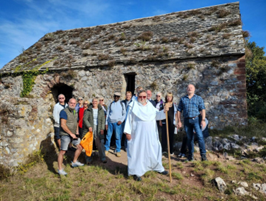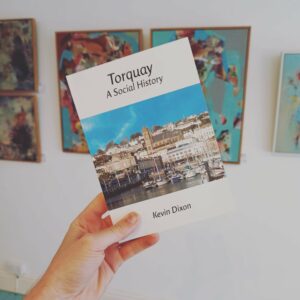Every September thousands of volunteers across England organise events in the nation’s largest festival of history and culture. It’s an opportunity to see hidden places and try out new experiences.
This month residents visited the ancient St Michael’s Chapel on its lonely outcrop a sacred place which has overseen and paralleled the evolution of Torquay.
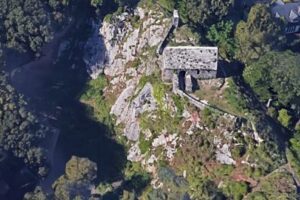 Thousands of us drive past this thirteenth century chapel every day without knowing of its existence. St Michael’s Chapel is to be found along the side of the Newton Road, in the woods right at the summit of the sheer limestone tor of Chapel Hill. You can glimpse it opposite Torre Station as you drive out of Torquay, past the Police Station heading towards Newton Abbot.
Thousands of us drive past this thirteenth century chapel every day without knowing of its existence. St Michael’s Chapel is to be found along the side of the Newton Road, in the woods right at the summit of the sheer limestone tor of Chapel Hill. You can glimpse it opposite Torre Station as you drive out of Torquay, past the Police Station heading towards Newton Abbot.
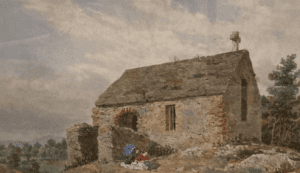 Local author and historian Dr Kevin Dixon told visitors, “We don’t know what the Chapel was originally called, who built it, and why someone went to the effort and expense in the first place.
Local author and historian Dr Kevin Dixon told visitors, “We don’t know what the Chapel was originally called, who built it, and why someone went to the effort and expense in the first place.
“What gives us a clue is the floor of irregular bedrock. A lot of time, money and effort was put into the chapel’s construction, but no attempt has been made to level the rock inside the building.
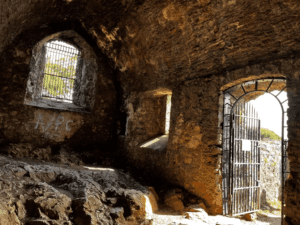 “This uneven floor, alongside the Chapel’s old name of St Marie’s, could suggest that the chapel was built to mark a sacred space, possibly the site of a vision of St Mary, which became a place of medieval pilgrimage.”
“This uneven floor, alongside the Chapel’s old name of St Marie’s, could suggest that the chapel was built to mark a sacred space, possibly the site of a vision of St Mary, which became a place of medieval pilgrimage.”
In place of good historical evidence, we have a folk tale which inevitably involves a ghost and a beautiful maiden.
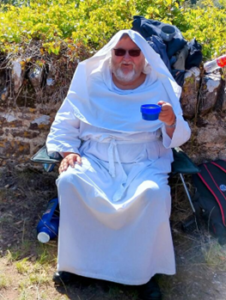 The chapel was used by the author Elizabeth Goudge in her 1949 novel Gentian Hill and on the day Margaret Forbes Hamilton read passages from the famous book.
The chapel was used by the author Elizabeth Goudge in her 1949 novel Gentian Hill and on the day Margaret Forbes Hamilton read passages from the famous book.
There are other ruins next to the chapel. All that now remains are a few graffiti-covered walls, but these were once vital to Torquay’s tourism industry.
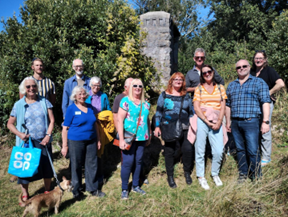 This was the Borough Meteorological Observatory which operated between 1888 and 1902.
This was the Borough Meteorological Observatory which operated between 1888 and 1902.
Torquay promoted itself as Britain’s most elite holiday resort and so the findings of the Observatory were of real importance for the town. We had good weather and we needed to tell everybody about it as soon as we could. There was acute competition for visitors… and for the right ‘type’ of visitors.
Each year Torquay’s Observatory issued two thousand five hundred ‘Afternoon Reports of the Weather’ by Telegram which were published daily in newspapers across the nation under the titles ‘Weather at the South, Torquay’ or ‘Weather at the Sea-side Resorts.’
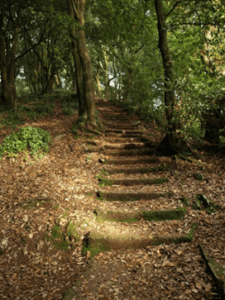 The Observatory became a tourist attraction in its own right, and many visitors came to view these new wonders of science and to take away printed reports. But technology moves on and in 1902 the Observatory closed. But for those 14 years what is now a ruin in the woods was Torquay’s main way of advertising itself to the world.
The Observatory became a tourist attraction in its own right, and many visitors came to view these new wonders of science and to take away printed reports. But technology moves on and in 1902 the Observatory closed. But for those 14 years what is now a ruin in the woods was Torquay’s main way of advertising itself to the world.
Thanks go to Tracy Pleece and Keith Holman for organising the day; Swisco for tidying up the site and Torbay Council for giving access to the building.
Torquay: A Social History’ by local author Kevin Dixon is available for £10 from Artizan Gallery, Lucius Street, Torquay, or:
https://www.art-hub.co.uk/product-page/torquay-a-social-history-by-kevin-dixon


